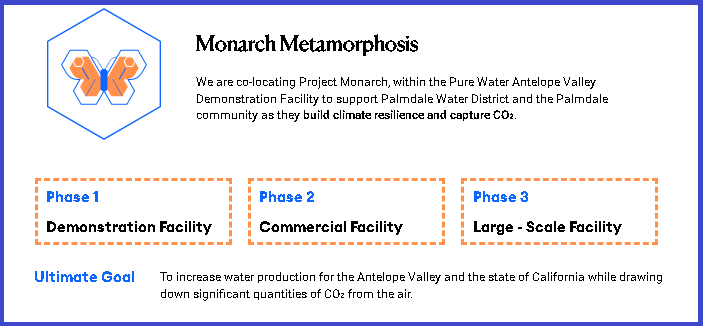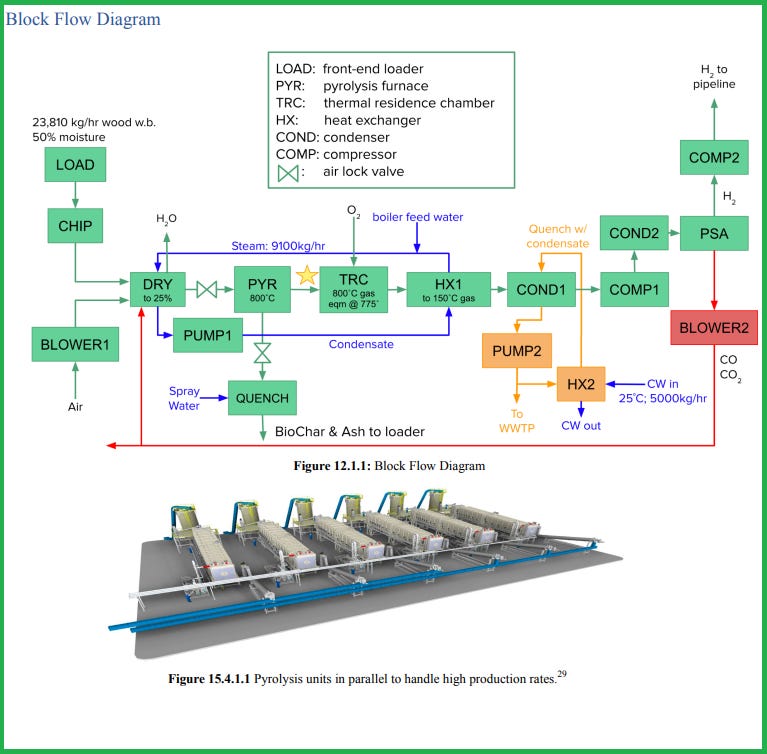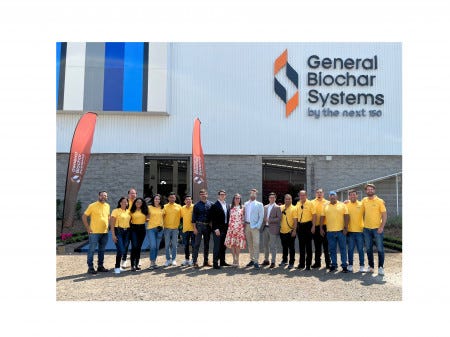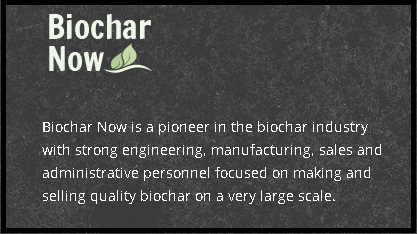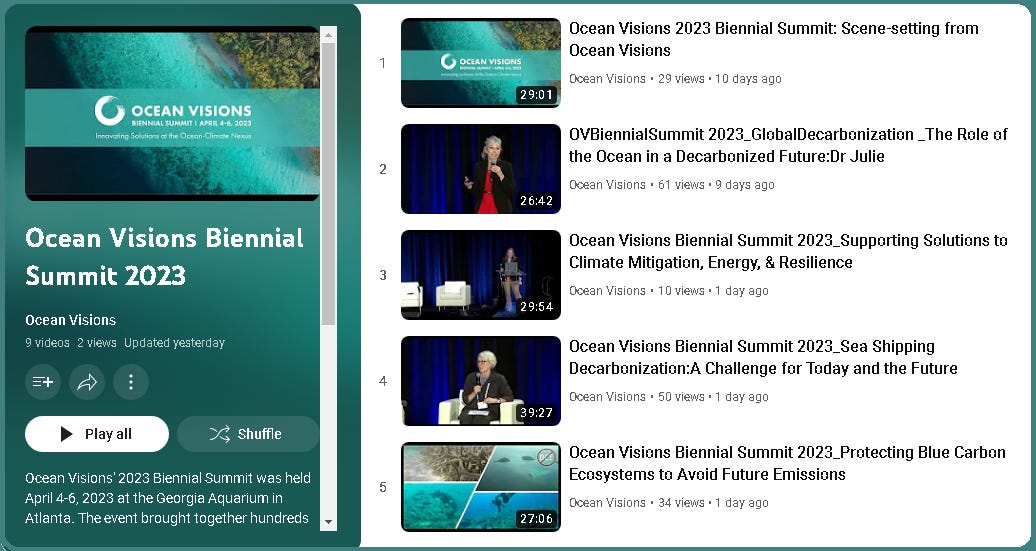Share Carbon Removal Updates
“Twelve, formerly known as Opus12, takes CO2 (either from the point of emissions or from direct air capture) and combines it with water. Its technology then electrifies this mixture to create chemicals and materials that are currently made from fossil fuels.”
“Carbon Capture decarbonize the atmosphere with direct air capture technology.”
“Terraform Industries is scaling technology to produce cheap natural gas with sunlight and air. They are committed to cutting the net CO2 flux from crust to atmosphere as quickly as possible. As solar power gets cheaper, there will come a time when it is cheaper to get carbon from the atmosphere than an oil well. That time is now.”
“The Pellegrini Lab (https://www.plantsci.cam.ac.uk/directory/adam-pellegrini) is recruiting a postdoctoral research associate (2 years) to work on modelling carbon and nitrogen cycling in both natural and agricultural settings. They aim to estimate carbon and nitrogen storage potential under a range of land use and land cover change scenarios, benchmarked against our own empirical data.”
“Ryan Anderson explains how Parallel Carbon calcines limestone at ambient temperature, using a membrane-free aqueous electrolysis process. Could this emergent technology be the cheapest and simplest way to integrate DAC with renewable energy?”
“This podcast from The Economist on direct air capture (featuring both Julio Friedmann & David Keith) on the new plant in No Trees TX.”
“Founder and CEO Aadith Moorthy explains how the marketplace uses advanced AI and satellite technology to tackle climate change while empowering agricultural communities to sequester CO2 by boosting soil carbon levels.”
“An important climate body at the U.N. is causing controversy as they seek to define use of CDR, and many supporters of carbon removal are not happy. The UNFCCC is in the process of figuring out how carbon removal fits into emissions reduction plans. A recent draft statement caused a stir among advocates of CDR and climate experts, as it described CDR as 'unproven' and ‘not contributing to sustainable development’. Many CDR advocates have contested these claims, especially given the crucial role attributed to CDR in last year's report from the Intergovernmental Panel on Climate Change (IPCC). In response, the Carbon Business Council is drafted a letter, with support from over 100 CDR experts, in an attempt to persuade the UNFCCC to provide a clearer definition of CDR. In today's discussion, we'll speak with Wil Burns, Co-Executive Director of the Institute for Carbon Removal Law and Policy at American University. We'll explore the purpose of this new definition, what's been proposed so far, and why it's so important." This episode’s second segment is an interview with - Todd Myers, the Director of the Center for the Environment at the Washington Policy Center. His 2022 book, “Time to Think Small: How nimble environmental technologies can solve the planet’s biggest problems,” sheds light on how compact, innovative technologies are giving individuals the power to safeguard endangered wildlife, cut back on CO2 emissions, and combat the issue of ocean plastic. Radhika talks with Todd about a landmark decision in Washington State that recently made headlines as it became the first in the U.S. to pass its capital budget with funding specifically allocated for carbon dioxide removal. Todd also discusses his work on environmental policy and its applications to carbon removal.”
“What does a utopian second-generation Direct Air Capture (DAC) system look like, and how does it differ from what we have now? In this engaging episode of Reversing Climate Change, Ross and Siobhan have a very frank and honest discussion with Sampo Tukiainen, a farmer, apiarist, meditator, rifleman and the CEO of C-Fix, a second-generation #directaircapture company that wants to do it all. After a brief intro to #DAC, they discuss the energy consumption of current facilities, and how second-generation technology offers potential energy savings compared to the energy-intensive first-generation methods. Would DAC with co-benefits be unstoppable? Probably. Sampo imagines a DAC facility that also addresses water scarcity, provides agricultural resources, and stores carbon dioxide onsite. Learn how Sampo balances his CDR career with his passion for farming, riflery, meditation and family. Hear his frank thoughts on the challenges of building a CDR company when there is conflict. By the end of the episode, listeners gain a deeper understanding of the possibilities offered by second-generation DAC and the importance of incorporating co-benefits into the system.”
“On 5 June 2023, Craig Cohon completed a 4,250km walk across Europe with the 'walk it back' organisation he founded. His goal was to pay back his environmental debt to the planet and launch the first dialogue campaign for clean carbon removal solutions. Let's take a look at what he's achieved and what comes next for walk it back.”
“Adding crushed rock dust to farmland has the potential to remove and lock up large amounts of carbon dioxide from the atmosphere. In the first trial of Enhanced Rock Weathering on upland grasslands in the world, UKCEH scientists applied 56 tonnes of finely ground basalt rock from quarries to three hectares of farmland in Plynlimon, Powys in May 2023 and will repeat this at the same time in 2024. The basalt rock dust particles, which are less than 2mm in size, absorb and store carbon at faster rates than occur with the breaking down, or weathering of the naturally occurring rocks at the sites, reducing the timescale from decades to just months.”
“Running Tide Board Member Max Chalfin provides an exposition of Running Tide's approach to ocean-based carbon dioxide removal R&D.”
“Whales play a pivotal role in the ecosystem by facilitating nutrient distribution throughout the ocean. How do they do it? Whale poop. Rich in nutrients, it essentially acts as a fertilizer for our oceans. In this mini-documentary, we’ll explore how XPRIZE Carbon Removal team WhaleX of Sydney, Australia mimics this naturally occurring process to design an innovative method for large-scale carbon dioxide removal from our oceans. This unique solution has the potential to significantly mitigate the effects of climate change and contribute toward a more sustainable future for our planet.”
“An innovative and sustainable chemistry developed at ORNL for capturing carbon dioxide from air has been licensed to Holocene, a Knoxville-based startup focused on designing and building plants that remove carbon dioxide from atmospheric air.”
“Biomass storage and sinking is a very new method of CDR, and as such we'll be diving into how to Measure, Report, and Verify how the tonnage gets removed! To that end we have a triple CEO panel lined up for our audience, each covering one of above ground storage, below ground storage, and marine storage.”
“Ocean Visions' 2023 Biennial Summit was held April 4-6, 2023 at the Georgia Aquarium in Atlanta. The event brought together hundreds of solutions-oriented people from the ocean-climate community who are committed to developing and advancing a range of solutions that can restore both the ocean and the climate, and help humanity and nature survive the devastating impacts of climate change. The event brought the community together around five tracks:
- Ocean-Based Contributions to Global Decarbonization
- Ocean-Based Contributions to Carbon Dioxide Removal
- Ocean Ecosystem Repair and Regeneration
- Human Adaptation to a Changing Ocean
- Building a Global Community of Solvers at the Ocean-Climate Nexus”
“In this episode of This Is CDR we are pleased to welcome Eion Carbon Co-Founders CEO Adam Wolf and CTO Elliot Chang to discuss how the company seeks to drive innovation in the science, measurement, and operations of enhanced weathering (EW) in agriculture.”
Leave a comment






